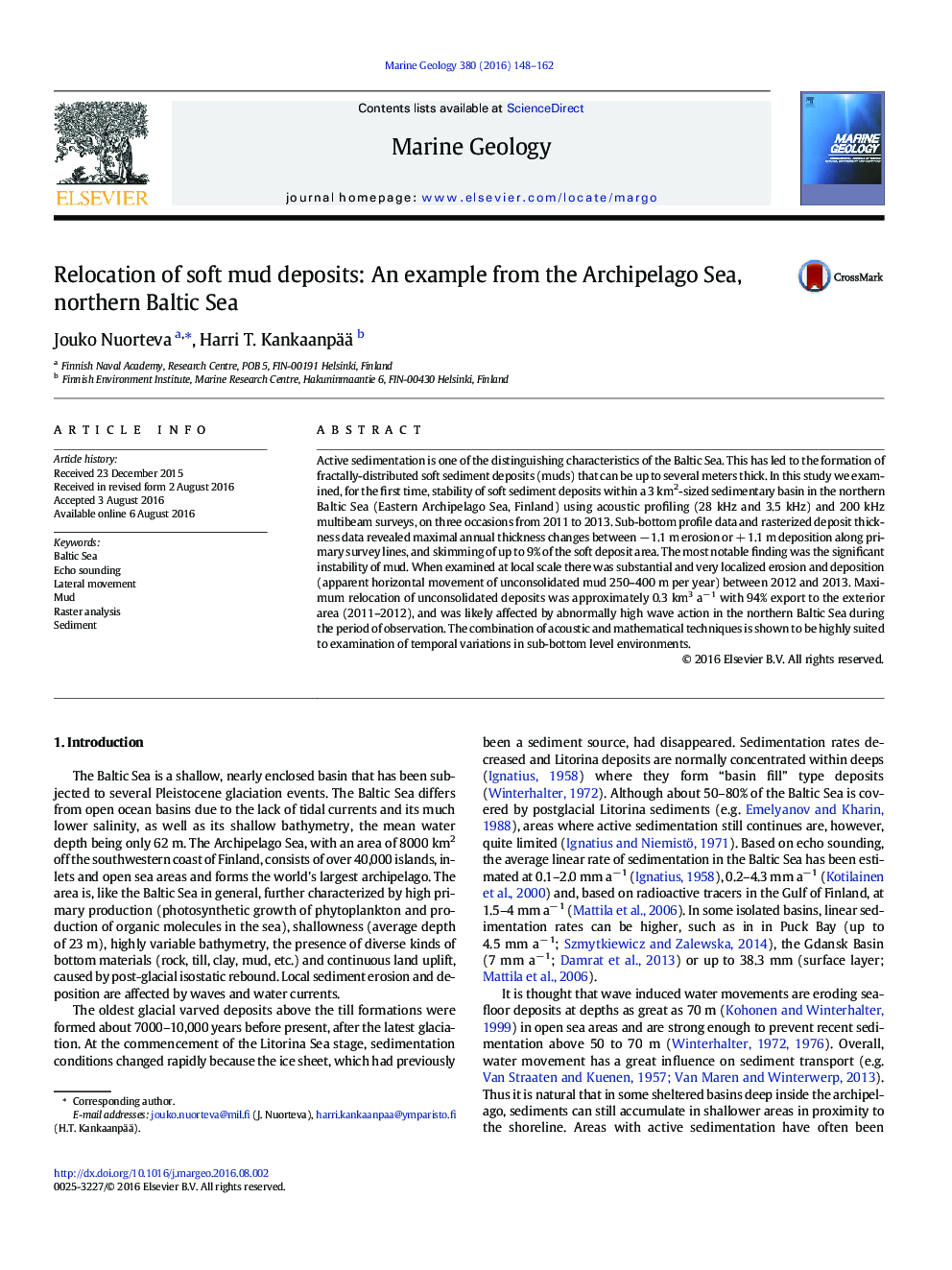| Article ID | Journal | Published Year | Pages | File Type |
|---|---|---|---|---|
| 6441293 | Marine Geology | 2016 | 15 Pages |
Abstract
Active sedimentation is one of the distinguishing characteristics of the Baltic Sea. This has led to the formation of fractally-distributed soft sediment deposits (muds) that can be up to several meters thick. In this study we examined, for the first time, stability of soft sediment deposits within a 3 km2-sized sedimentary basin in the northern Baltic Sea (Eastern Archipelago Sea, Finland) using acoustic profiling (28 kHz and 3.5 kHz) and 200 kHz multibeam surveys, on three occasions from 2011 to 2013. Sub-bottom profile data and rasterized deposit thickness data revealed maximal annual thickness changes between â 1.1 m erosion or + 1.1 m deposition along primary survey lines, and skimming of up to 9% of the soft deposit area. The most notable finding was the significant instability of mud. When examined at local scale there was substantial and very localized erosion and deposition (apparent horizontal movement of unconsolidated mud 250-400 m per year) between 2012 and 2013. Maximum relocation of unconsolidated deposits was approximately 0.3 km3 aâ 1 with 94% export to the exterior area (2011-2012), and was likely affected by abnormally high wave action in the northern Baltic Sea during the period of observation. The combination of acoustic and mathematical techniques is shown to be highly suited to examination of temporal variations in sub-bottom level environments.
Related Topics
Physical Sciences and Engineering
Earth and Planetary Sciences
Geochemistry and Petrology
Authors
Jouko Nuorteva, Harri T. Kankaanpää,
